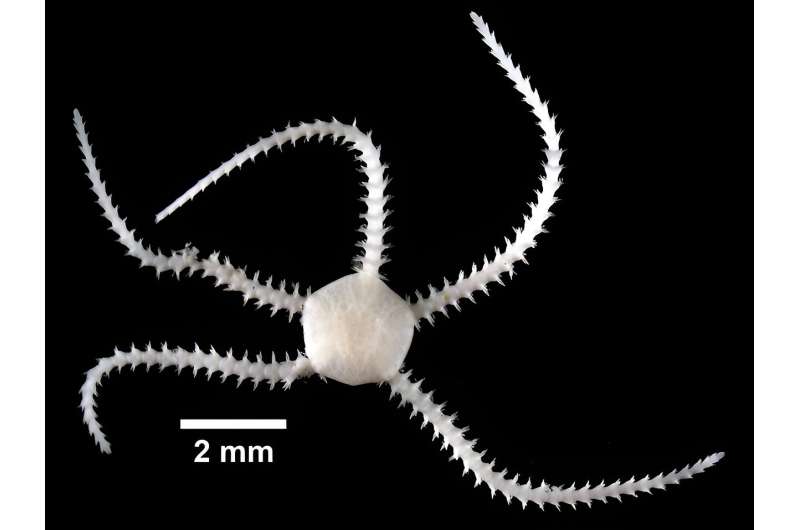August 7, 2024 report
This article has been reviewed according to Science X's editorial process and policies. Editors have highlighted the following attributes while ensuring the content's credibility:
fact-checked
peer-reviewed publication
trusted source
proofread
Brooding brittle star found to have massive genome due to duplication of chromosomes

A pair of life scientists at the University of Sydney, working with a colleague from Museums Victoria, in Australia, has found that the brooding brittle star (Amphipholis squamata) has a massive genome due to duplication of chromosomes.
In their study, published in the journal Royal Society Open Science, Maria Byrne, Timothy O'Hara, and Andrew Hugall conducted a genetic analysis of the sea creatures.
Brooding brittle stars are echinoderms in the class Ophiuroidea and are closely related to starfish. They have a small body and long, spindly arms. Prior research has shown that the sea creatures are highly adaptive—they live in oceans all around the world. In this new effort, the researchers wondered about the factors that led to its adaptability to so many different marine environments. To that end, they took a close look at its genome.
The researchers found that it has a massive genome—one so large and varied that the team found it difficult to describe the brittle star as a single species. They found it to be a hermaphrodite with evidence of inbreeding, cloning and a unique sperm morphology.
The team found evidence that the creature undergoes polyploidization, in which a chromosome is duplicated over and over. They suggest that instead of diverging into separate species as it encounters new environments, the brittle star hybridizes lineages, leading to a high degree of genetic diversity.
They also found that at times, some of the genomes are simply added together, resulting in even more copies. And they noted that it seemed likely that the polyploidization was due to allopolyploidy, because it appeared that its multiple sets of chromosomes came from different species, which they point out tends to be caused by hybridization.
Unfortunately, the researchers were unable to pinpoint the exact mechanism involved in the development of such a large genome, though they suggest it is likely tied to the brittle star's ability to spread so widely. They suggest future work looking at other environmental variability factors, parasite loads and physical features.
More information: Andrew F. Hugall et al, Genetic variation in the brooding brittle-star: a global hybrid polyploid complex? Royal Society Open Science (2024). DOI: 10.1098/rsos.240428
Journal information: Royal Society Open Science
© 2024 Science X Network

















